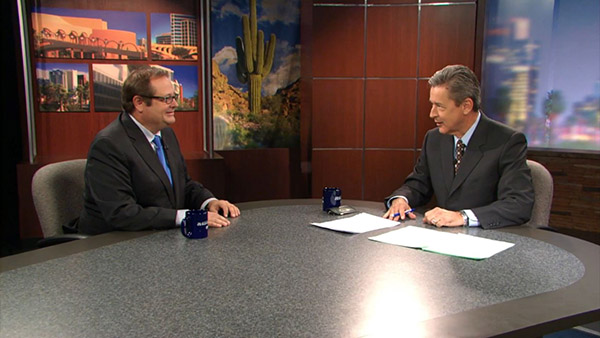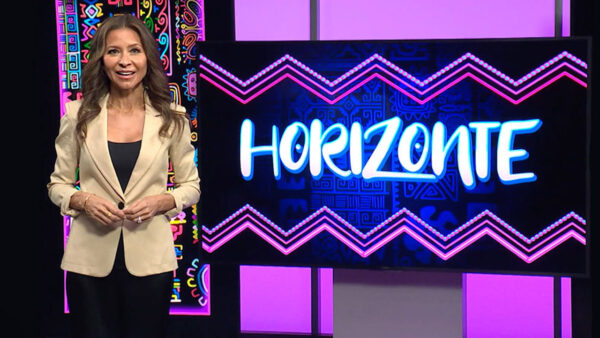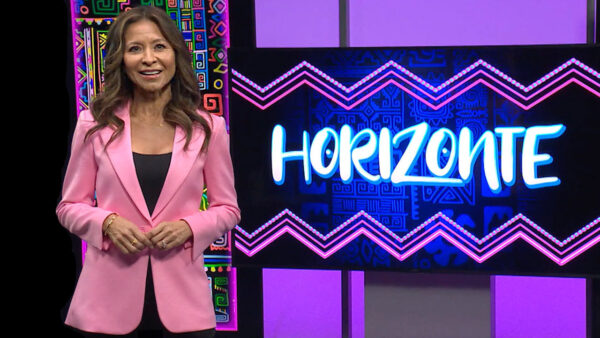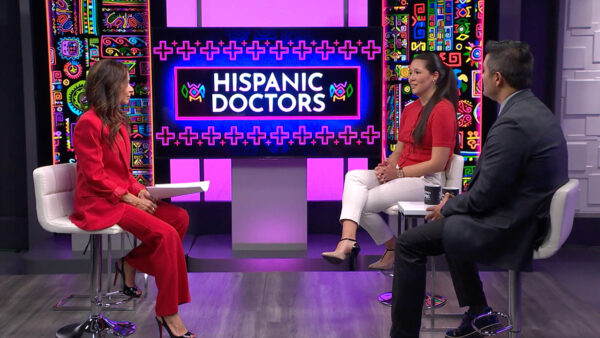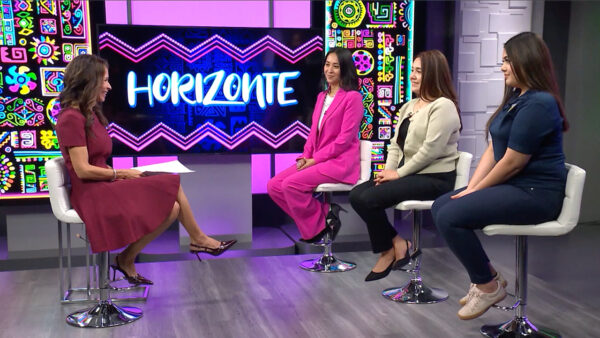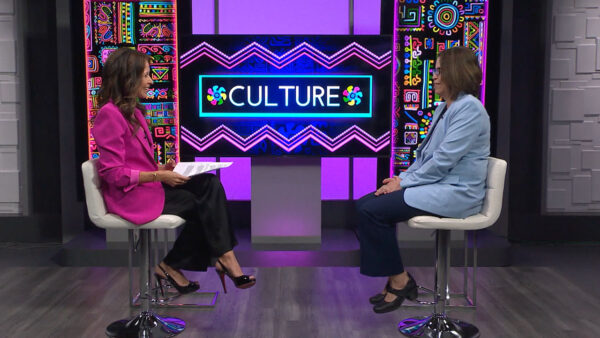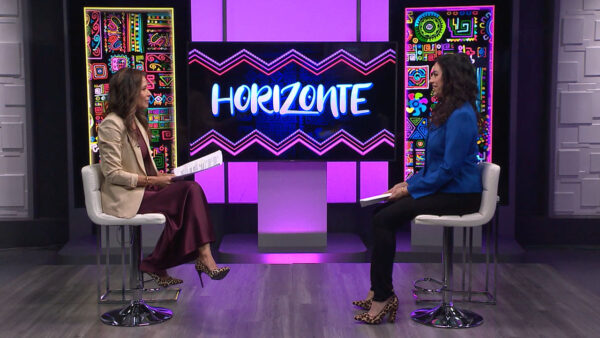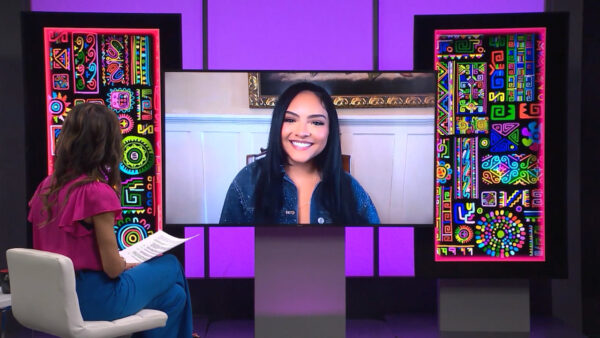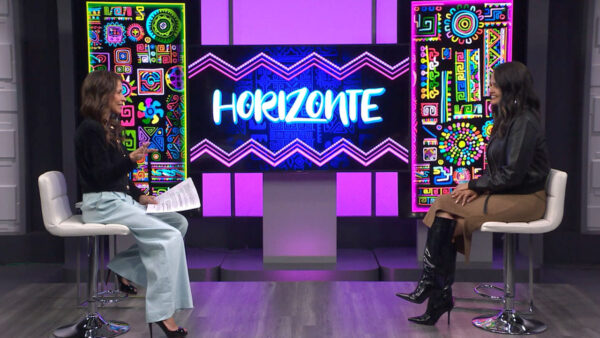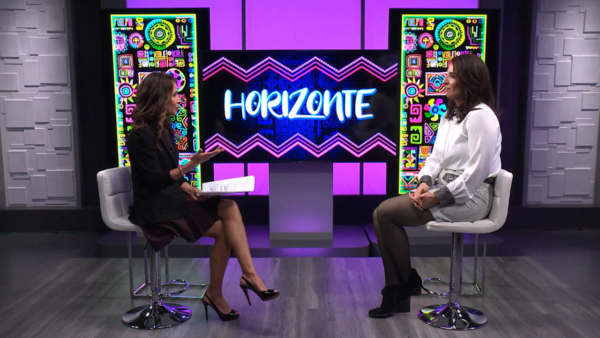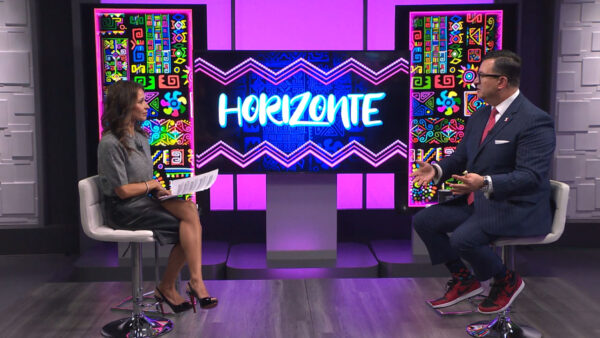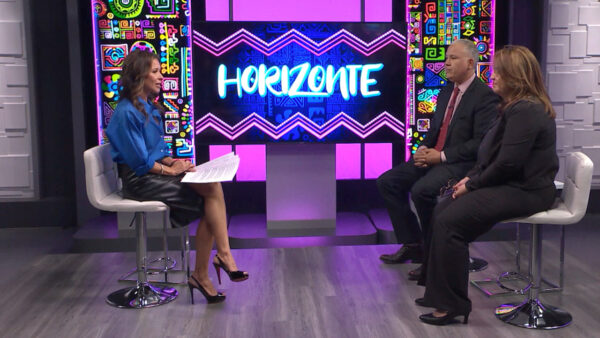A new research center for Latino Community Development has been created to honor Raul Castro, the first Mexican-American elected as Arizona’s Governor in 1974. The institute will work to identify and develop public policy proposals focused on the Latino community. Jose Cardenas talks to Professor Raul Yzaguirre, Executive Director of the ASU Center for Community Development and Civil Rights and Phoenix College Acting President Dr. Anna Solley about the Institute’s goals and mission.
José Cárdenas:
Good evening. I'm José Cárdenas. Tonight on Horizonte, voters in Phoenix say yes to millions of dollars in bonds. What can the public learn from this bond election process? Also, find out how it will benefit the Latino community in the future. And, a new research center created to develop public policy proposals focused on the Hispanic community. All this up next on Horizonte.
Announcer:
Funding for Horizonte is provided by SRP.
Announcer:
SRP'S business is water and power but our dedication to the community doesn't stop there. SRP. Delivering more than power.
José Cárdenas:
Last week Phoenix voters approved seven bond issues totaling $878.5 million across the city the money will pay for projects such as funding for public safety and an ASU downtown campus which would include a new building for this public television station. This year marks the first time nonprofit agencies have been aloud to request and receive money in a Phoenix bond program. Proposition 5 will issue $133.8 million in bonds to expand or construct libraries and youth, senior and cultural centers. Under this bond issue $50,000 is said to go to Chicanos por la causa, for Cesar Chavez/Santa Rita Cultural center. Also $4.8 million is allocated to go to a combined service center for valle de sol. Here to talk about the bond election is Harry Garewal. Garewal served as a member of the city of Phoenix's bond executive committee. He is president and CEO of the Arizona Hispanic chamber of commerce. Also here is the administrative officer for valle del sol, Kurt Sheppard. Kurt, Harry, welcome to Horizonte.
Kurt Sheppard:
Thank you.
José Cárdenas:
Harry, we noted in the introduction this was the first time nonprofits have been allowed to participate. Why was that long?
Harry Garewal:
That's right, Jose. One of the reasons that probably makes the most sense for the general community is that it really is more cost effective. Nonprofit agencies are already providing the kinds of services or products. What they needed was just a boost to be able to put it into a facility, for example. So by doing that the city of Phoenix was able to go out and get the same kinds of products or services without having the overhead costs, administrative costs that are associated with that.
José Cárdenas:
Well, but why not just leave the nonprofits to their traditional sources of fundraising and spend the money on other things like fire and police and the kinds of things that government has traditionally focused on?
Harry Garewal:
Nonprofits are working hand in hand with government. When you think about it, they're providing the same kinds of products or services in a slightly different way for a specific community. So here was an opportunity to build these collaboratives. And these collaboratives really help the city of Phoenix to be able to provide the services and products but not have the administrative costs that I mentioned earlier that are associated with that and really build a good foundation for those relationships.
Kurt Sheppard:
Right. And to build on what Harry is saying, we are with the city. Say for instance if someone is having a crisis because of behavior health needs. If their meds have run down and they can't get to a doctor and having a crisis. Rather than having the fire and city police respond to that, we can do that more cheaply and effectively. It saves them to respond to more pressing matters so we can take care of those things we do best and they can take care of things they do best.
José Cárdenas:
So it made good sense to involve the nonprofits. Harry as I understand it there was an elaborate process people had to go through to decide which nonprofits would participate.
Harry Garewal:
The process has been tried and true for a number of years and the city has used it and it's a matter of sitting down and seeing what the needs are for the city. And by pulling that information together.
José Cárdenas:
You're talking generally about deciding what the focus of the bond proceeds is going to be?
Harry Garewal:
That's correct. For example, when the first look at the bond was taken it was basically around $3 billion. Well, obviously you can't do $3 billion worth of work in one year. However, there are other pieces that are more manageable. So each one of the committees that was formulated -- and there were 700 members that participated in this process so the mayor did a very good job of being inclusive. Each of the committees took a specific area they focused on. The city staff was able to put together a wish list, if you would, and take a look at it and find out specifically what was needed. And what were the most immediate needs. And based on that, they came up with a formula that said, okay, if we're doing infrastructure, for example, we need more water and sewer systems. Okay. How much of that can we allocate towards this because of the growth that's going on in the city right now. So we went through this process, were able to come up with a budget that basically said, okay, this is how much we really need right now today in order for us to move forward in the future. The committees were given those budgets. They worked through it and said, okay. These are the specific areas or the specific kinds of products or services that are necessary. And they went through a very elaborate process of identifying what are the needs specifically right now that can be met.
José Cárdenas:
And you had about 19 of these committees, as I understand it.
Harry Garewal:
That's correct.
José Cárdenas:
And they would be things like arts and culture or human services and so forth.
Harry Garewal:
Yes.
José Cárdenas:
How did the nonprofits -- and we're going to talk to Kurt in a moment, but how did the nonprofits get involved at that level?
Harry Garewal:
Well, if you take a look at it and look at one of the committees that is in revitalization, that's a fit. That makes sense. If you're working on trying to improve the community at large you want to find good partners to come in and provide the products and services with you. Sometimes it's a matter of sitting down and saying, okay, as Kurt mentioned earlier, maybe there's a service they can provide after hours that can be taken care of more efficiently and effectively rather than calling our firefighters or the police department to try to deal with some of those issues.
José Cárdenas:
And you were on the overall committee that made the final decision as to where the moneys were going to go and what nonprofits would be involved, is that right?
Harry Garewal:
That's correct.
José Cárdenas:
And that was the executive committee?
Harry Garewal:
It was. There were 19 members on that committee. And it was a pretty interesting process, you know.
José Cárdenas:
What about the process by which you were selected?
Harry Garewal:
Well, that was really done as a way for the mayor to be able to make those appointments. So we were very glad that we were the chamber of commerce, Arizona Hispanic chamber was invited today come in and participate so we could have a voice in where the allocation of these funds would be going.
José Cárdenas:
The Latino community? What was its representation?
Harry Garewal:
It had a good reputation. If I remember correctly, there were about 5 or 6 individuals there from the Latino community that sat on the committee. Now if you look at the overall 700 members that sat on there was a good representation of the Latinos on those as well.
José Cárdenas:
Harry, in the weeks before the election there was some suggestion this was not just innovative but controversial, that you would have entities such as valle del sol or any nonprofit that was going to get a significant benefit from these public moneys. Was that discussed at the committee level?
Harry Garewal:
It was. And that's where we sat and really made a good assessment of if this was a wise use of the dollars of the general funds, the public funds that were going to be coming forward. And the decision was, yes, it did make all the sense in the world. Because again, there are certain services or products that nonprofits can deliver at a more cost effective rate than the city of Phoenix can.
José Cárdenas:
Kurt, let's talk about valle del sol's involvement. How did you go through the process?
Kurt Sheppard:
It was an open process. The city put out the RFP. Any one was able to submit an application. It went through the city's budget and research department. We used exact same forms that the city of Phoenix did for submitting their projects. All those projects then were put before the city staff and they decided which committee your proposal will go before. We then went before committees which were made above community members, the committee we want. Actually Pauline Vasquez Morrison was the chair person of it but there were several, well, about 30 other community members on that committee. And we submitted our proposals, and in fact we made two presentations in front of the committee. The committee then ranked the different projects to determine which ones would get what amount of money.
José Cárdenas:
Now, when they're ranking projects are they ranking just projects from nonprofits or are they ranking you against a proposal that would send some moneys to a governmental entity?
Kurt Sheppard:
All the proposals were ranked together, the nonprofit projects were ranked right along with the city projects.
José Cárdenas:
And did the process involve shall we say lobbying or presentations outside the regular whatever the proposal process was?
Kurt Sheppard:
Well, it did involve talking to a lot of folks, including city staff as well as other folks outside the process because there were a lot of changes as Harry said. There was $3 billion worth of projects submitted. We were asked on two occasions to revise our scope to bring down what the costs might be to try to get more projects in under the bar. And during that process we needed to talk to various people to try to see what kind of scope would meet the needs of what the committee members were looking for, what the city was looking for. So there was a lot of communication and collaboration to try to get the best proposal and meet the needs of all the folks so we could get as many projects in as possible. So there was a lot of discussion.
José Cárdenas:
Harry, what role did the community play in this process? I know that you had community members on the committees and so forth. But was it like a zoning hearing where people could show up and express their views and their support for various proposals?
Harry Garewal:
Absolutely. There were several occasions where the community were invited to come in and make their comments. So there was an open public process. And we sat through that. I sat through two of those, actually.
José Cárdenas:
Were they well attended?
Harry Garewal:
Very well. They were jam-packed. There were people there. And you asked if there was any lobbying going on. Well, when you have an open and competitive process, you're always going to have that kind of activity going on. So there were community members who came forward. And they were vying for their own particular project whether it was culture, the arts, the revitalization, the firefighters, the police, all the components that were being looked at. Probably the one that got the least amount of notoriety was the infrastructure. The people were excited about water and sewer so they didn't say a lot about that.
José Cárdenas:
On the same token they didn't have much competition, right?
Harry Garewal:
That's correct.
José Cárdenas:
But was it your sense that in the end there was a pretty fair reputation of different ethnic groups, different kinds of social service agencies in terms of where the moneys went?
Harry Garewal:
I think there was. And part of what I think we've learned today is that for a lot of us who have never been involved with this, we understand how the process works now. And I think that was the most important aspect of this whole process was to be able to sit there and really see how it unfolded. Personally I've been involved in a couple other bonds like this for another government entity. But for folks to have come out who have never participated and say, this is how it works, I think is really important. And the one thing I will say about the city of Phoenix and we should give them the praise that they had an open and fair process and everything was above board.
José Cárdenas:
Now, Kurt, what's valle del sol going to do with the money?
Kurt Sheppard:
Actually we're going to buy a building, a 32,000 square foot building. Because currently, everyone knows the Latino population has grown immensely over the last decade or so. So the needs of rent space has increased. And because of that we've had to rent space which is not efficient or effective for providing services. We need things to be together.
José Cárdenas: What are the services that you provide?
Kurt Sheppard:
Valle del sol has been in the community for 36 years providing services, we provide behavioral health, counseling, substance abuse treatment, parent and family support for classes, we provide violence prevention, domestic violence prevention and leadership training. So we provide a wide spectrum of services to meet the needs of the community.
José Cárdenas:
This money is all going toward the construction of a new building.
Kurt Sheppard:
Actually we're not going to build a new building. We're going to go out and try to purchase an existing facility, try to keep some of the overhead down rather than build a building, find one and do some renovations and move in so we can gain the efficiencies quicker.
José Cárdenas:
Harry, you talked about lessons learned. Anything else besides what you already mentioned? We're going to wrap it up with this. You get the last word.
Harry Garewal:
Sure. I think one of the other important things we learned was the fact that by partnering with nonprofits, for example, and Kurt just made comment to this, the city of Phoenix effectively is making an initial investment into one facility and then after that, they are not responsible for the maintenance and operation it or the administrative costs but the citizens really get the benefits of having the products and services available to them.
José Cárdenas:
Harry Garewal, Kurt Sheppard, thank you for joining us on Horizonte. Congratulations on the outcome of the election. Hope to see you again soon.
José Cárdenas:
Last month a reception was held at the state capitol to announce the start of the new Raul H. Castro institute. The name honors Raul Castro the first Mexican American elected to the Arizona governors office in 1974. The institute will develop public policy proposals focused on the Latino community. With us tonight is acting Phoenix college president Dr. Anna Solley. She is leading and overseeing the development of RCI. Also here is the executive director of the ASU center for civil rights and community development and ASU presidential professor of practice Raul Yzaguirre. Thank you for being on Horizonte.
José Cárdenas:
Let's talk about the namesake for the institute. Governor Castro was born in the Mexican state of Sonora but in many ways his life is the American dream.
Raul Yzaguirre:
It is indeed. He is an example of what perseverance and hard work can do in this country combined with opportunity. He grew up poor. He was a boxer. He put himself through college. He went to law school. He had difficulty getting a job after he graduated from law school, but faced an enormous amount of obstacles yet he went on to become the governor of the state of Arizona.
José Cárdenas:
Not just governor but ambassador to three countries.
Raul Yzaguirre:
Yes. As a matter of fact, that was in the Argentina in the American embassy last summer and his picture was proudly displayed there. They still revere him very much.
José Cárdenas:
Now, I understand from a recent article that at the age of 86 he's decided that he might want to retire.
Raul Yzaguirre:
He's in amazing good condition. His mind is very clear. He tells jokes. He tells stories. He engages you in very sophisticated conversations. And he's got a little trouble running but other than that he's in good shape.
José Cárdenas:
Dr. Solley, it's a great name the institute has adopted. But let's talk a little bit about how it came to be.
Dr. Anna Solley:
Sure. Well, thank you very much for this opportunity to share information about the institute. About a year and a half ago governor Napolitano approached our chancellor and indicated that she had a lot of concerns about issues effecting the Latino community and requested that Maricopa community colleges provide leadership for the institute. And of course our chancellor was very honored and certainly is committed to the future of the institute. So as a result of that initial request we engaged a design team comprised of representatives from various community agencies and our state universities and the Maricopa colleges to begin to articulate what this institute would be about, what the mission would be. And as professor Yzaguirre has indicated, issues concerning education, health around civic services, civic engagement and leadership. The institute is housed at Phoenix College. And it is a new initiative for our college. But we're very excited about the opportunity to provide leadership for the institute.
José Cárdenas:
Now, there was a kickoff reception. I think we had some pictures of it. Tell us about that.
Dr. Anna Solley:
The reception was a beginning point for the institute because it gave the governor and a number of community leaders an opportunity to learn more about the institute. Certainly we were honored that governor Castro and his family were able to be with us. And governor Castro is a remarkable man given the adversity that he faced. He serves as a role model for us. He even met with children prior to that reception and talked about his life story. And they were very excited about the opportunity to engage in conversation with him. So we had about 300 leaders from the community who came to greet and meet with governor Castro and learn more about the institute and we also indicated that evening that they are our best friends, our conmadres y compadres, because we are engaged now in fundraising efforts. So we do hope to approach them again in the near future and again seek their support in other ways as well.
José Cárdenas:
What role, Raul, will the governor play in the ongoing efforts of the institute?
Raul Yzaguirre:
Directly she won't play a role. I mean, this is an independent entity. She of course was very proud to initiative the process that led to this. We don't want this to be a partisan entity. It's policy oriented. It will help her whoever else succeeds her in the legislature to determine what the facts are. So much policy is made on emotion, I think we want to change the paradigm and try to make it more fact based and based on what's really happening and not on supposition.
José Cárdenas:
As I understand it it's been described as a do tank instead of a think tank. In what way?
Raul Yzaguirre:
In a sense that we perceive it to be a more activist entity. We don't want it to be simply ivory tower research. We want it to be relevant to the issues that are being faced by the citizens of Arizona, particularly the Latino community. The Latino community although it's a very large percentage of the state hasn't been systematically analyzed nor our interests have been framed in a way that Arizonans can understand them. So we want to fill that void.
José CárdenasJose Cardenas:
Well, we have your institute which has attracted a lot of attention since you came here and nationwide. You got the institute at Southern Cal. For research you have the pure Hispanic research center in Washington. What need does this institute fill?
Raul Yzaguirre:
We had the Morrison institute and we got the whole range institute. But this one is filling the gap. It's addressing a niche that's been ignored. And that is the policy issues regarding Latinos in Arizona, in employment and for example we were very interested in understanding how much procurement dollars go to Latinos from the state, from the county, from the city. We're interested in employment, finding out what kind of -- whether we're getting our fair share of jobs in Arizona, what kind of impact the various propositions have had on voting patterns, on suppressing the vote, if any. Those kinds of very particular kinds of issues that effect Arizonans.
José Cárdenas:
Arizona-specific focus.
Raul Yzaguirre:
Right.
José Cárdenas:
Dr. Solley, you indicated before that at least for fundraising purposes you've already identified a group of people that you're going to be going back to. But who else will be involved in the governance and administration of the institute as we go forward?
Dr. Anna Solley:
We do have a grand structure comprised of three levels. We have executive committee, Raul and I serve on that, and Ann Maria Chavez representing the governors office. Beyond that we are in the midst of forming an advisory committee that will be comprised of statewide leadership from our community leaders, our government and legislative leaders, education leaders and so on. And we hope to kickoff that particular advisory committee by the start of the fall semester or in early September. And then beyond that we do have our board of governors and that is comprised of our executive leadership including Michael Crow, president of ASU and our chancellor, Rufus Glasfer. So that is a composition of our executive and board of governors, so to speak.
José Cárdenas:
Raul, you indicated that some of these issues will be tackled, at leat for procurement, but given the heritage of this institute to Raul Castro, first governor of Arizona and the last one who was Mexican--
Raul Yzaguirre:
But won't be the last.
José Cárdenas:
So far. And a lot of concerns about the last set of elections where the Latinos did not fair too well, what role is this institute play in that regard?
Raul Yzaguirre:
I think it's an area that we have to look at. My center the ASU center for community development also has an interest in that arena. We will expect some collaborative efforts addressing this issue. It's a complicated issue. Do you start with the candidates themselves, do you start with analyzing the voter patterns, voter registration? It's got so many fasets that it's a lot of work to be done simply to understand the situation. And of course you have to do something about it once you understand it.
José Cárdenas:
And there are other issues in a way interesting that the institute has been created at a time when the level of at least anti- immigrant sentiment seems to be at an all-time high. Are those issues the institute will be addressing as well?
Raul Yzaguirre:
I would expect they will be. We haven't gotten to that point yet. We're going to start out with things that are obvious like employment and procurement and we're going to graduate to more sophisticated issues as we go on. It's also an area that my center has an interest in. But we just have to wait and see. A lot of depends on where we think we can make a difference. What makes this, as I said earlier, what makes this center different is that we're not interested in just interesting stuff. We're interested in impactful kinds of issues.
José Cárdenas:
And Dr. Solley, how will the institute have an impact? What happens after it decides that there's a topic that it's going to tackle and comes up with some kind of proposal?
Dr. Anna Solley:
Well, we're very interested in conducting forums, perhaps a Latino town hall in the near future. And as a result of those conversations hopefully identify some priorities and develop policy briefs so that we can inform our community. We also want to be a clearing house for best practices. So those are ways that we could in a sense educate our community about some of these very significant issues.
José Cárdenas:
We've got about 30 seconds left. What are the next steps coming up?
Raul Yzaguirre:
We need to raise $150,000 minimum in the next two or three months, we need to find a dynamic, incisive, smart director to lead the operation. We need to convene some town meetings, we need the public to give us some input, and then we're on our way.
José Cárdenas:
Raul, Dr. Solley, thank you very much for joining us on Horizonte. Good luck on the institute.
José Cárdenas:
If you want to know more about tonight's program or information on upcoming shows just log on to our website at azPBS.org and click on Horizonte. Next week on Horizonte we honor Mexican American labor leader Cesar Chavez's birthday. That's all for our show tonight. I'm José Cárdenas. For all of us at Horizonte, have a good evening. ¶¶[music]¶¶
Announcer:
If you have questions or comments about Horizonte, please write to the addresses on your screen. Your comments may be used on a future edition of Horizonte.
Kurt Sheppard: Administrative officer, Valle del Sol;
